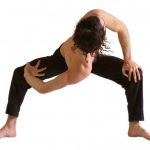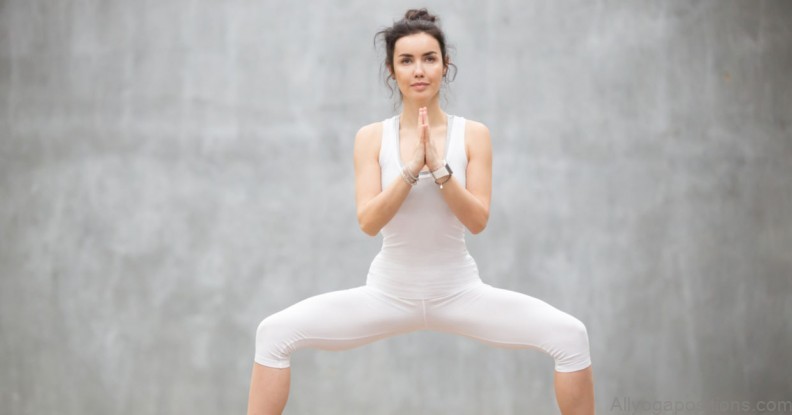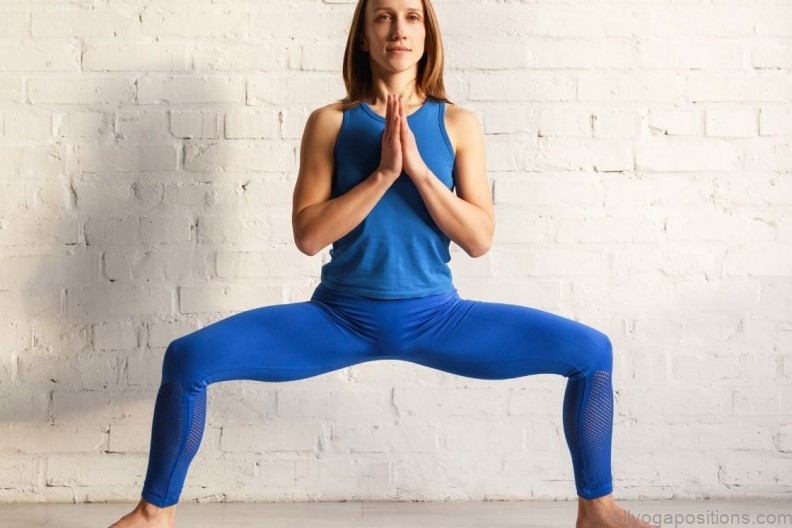Introduction
In the realm of yoga, Utkata Konasana, commonly known as the Goddess Pose, stands as a powerful asana that embodies both physical and emotional strength. The word “Utkata” translates to “powerful” or “fierce,” while “Konasana” refers to the seated angle posture. Together, they form a pose that celebrates the goddess-like qualities within each practitioner. In this article, we will delve into the origins and meaning of Utkata Konasana, explore its physical benefits, and delve into the emotional and inner transformation it can bring. Additionally, we will examine variations of this pose, allowing practitioners to deepen their practice and experience new dimensions of the Goddess Pose.
The Origins and Meaning of Utkata Konasana
Utkata Konasana finds its roots in ancient yogic traditions, particularly in the Hatha and Vinyasa styles. The pose embodies the strength, grace, and resilience of the goddess archetype, which has long been revered in various cultures worldwide. In Hindu mythology, the goddess Durga is often depicted in a similar wide-legged stance, radiating power and protection. Utkata Konasana serves as a physical embodiment of this divine energy, allowing practitioners to tap into their inner strength and fierce determination.
Utkata Konasana: Exploring the Powerful Goddess Pose Photo Gallery
The Physical Benefits of Utkata Konasana
Utkata Konasana offers numerous physical benefits, making it an excellent addition to any yoga practice. The wide-legged stance stretches and strengthens the lower body, particularly the inner thighs, groin, and hips. Regular practice of this asana can improve flexibility, increase stability, and enhance overall leg strength.
Furthermore, Utkata Konasana engages the core muscles, supporting a strong and stable foundation. The pose also strengthens the pelvic floor muscles, promoting better posture and aiding in the prevention of lower back pain.
Apart from the lower body, Utkata Konasana stimulates the upper body as well. The arms are actively engaged in this pose, strengthening the shoulders, biceps, and triceps. Additionally, the chest and upper back are opened, encouraging better respiratory function and relieving tension in the upper body.
Utkata Konasana: Cultivating Emotional Strength and Balance
Beyond its physical benefits, Utkata Konasana has a profound impact on emotional well-being. The wide-legged stance and the groundedness it cultivates help practitioners connect with their inner strength and stability. By embodying the qualities of the goddess, this pose encourages a sense of empowerment and self-assurance.
As the Goddess Pose opens the chest and heart center, it facilitates emotional release and promotes a sense of vulnerability. This posture encourages practitioners to confront and embrace their emotions, allowing for emotional healing and growth. Utkata Konasana helps in developing emotional balance and resilience, providing a safe space to explore and integrate feelings.
Utkata Konasana: Harnessing Inner Power and Confidence
Utkata Konasana serves as a powerful tool for harnessing inner power and cultivating confidence. By assuming this pose, practitioners tap into their innate strength, both physically and mentally. The wide stance, coupled with the grounding energy, creates a strong foundation from which to draw upon.
Through regular practice, Utkata Konasana can help individuals build self-confidence and assertiveness. As the pose challenges one’s physical limits, it simultaneously instills a sense of accomplishment and self-belief. This newfound confidence transcends the yoga mat, empowering individuals to face challenges and pursue their goals with determination and resilience.
Exploring Utkata Konasana Variations for a Deeper Practice
Variations of Utkata Konasana offer practitioners an opportunity to explore and deepen their practice. These variations allow for a more targeted focus on specific muscle groups or provide a fresh perspective on the Goddess Pose. Here are a few variations to consider:
- Garland Pose (Malasana) Variation: Begin in Utkata Konasana and slowly lower your hips toward the ground, assuming a squat position. Bring your hands together at your heart center and press your elbows against the inner thighs. This variation further strengthens the lower body and engages the core.
- Twisting Goddess Pose: From Utkata Konasana, bring your hands to your hips and twist your torso to the right, hooking your left elbow outside of your right thigh. Repeat on the other side. Twisting Goddess Pose enhances spinal mobility and stimulates the digestive system.
- Dynamic Utkata Konasana: Transition between Utkata Konasana and Warrior II by alternating the leg position. This dynamic flow builds strength and endurance while incorporating a wider range of motion.
- Bound Utkata Konasana: Interlace your fingers behind your back and press your palms together. Inhale, lift your heart, and exhale, fold forward from the hips. This variation opens the chest, shoulders, and hamstrings while enhancing flexibility.
- Elevated Utkata Konasana: Place a block or bolster under your hips, elevating your seated position. This variation intensifies the stretch in the hips and groin, providing a deeper release.
By incorporating these variations into your practice, you can expand your understanding of Utkata Konasana and explore its limitless potential.
Conclusion
Utkata Konasana, the Goddess Pose, invites practitioners to embody their inner strength, grace, and confidence. Through its physical benefits and emotional transformation, this asana empowers individuals to connect with their divine qualities and cultivate resilience. As you explore Utkata Konasana and its variations, remember to listen to your body and honor your own unique journey. Allow the Goddess Pose to guide you on a path of self-discovery, unlocking your hidden potential and embracing the fierce goddess within.










